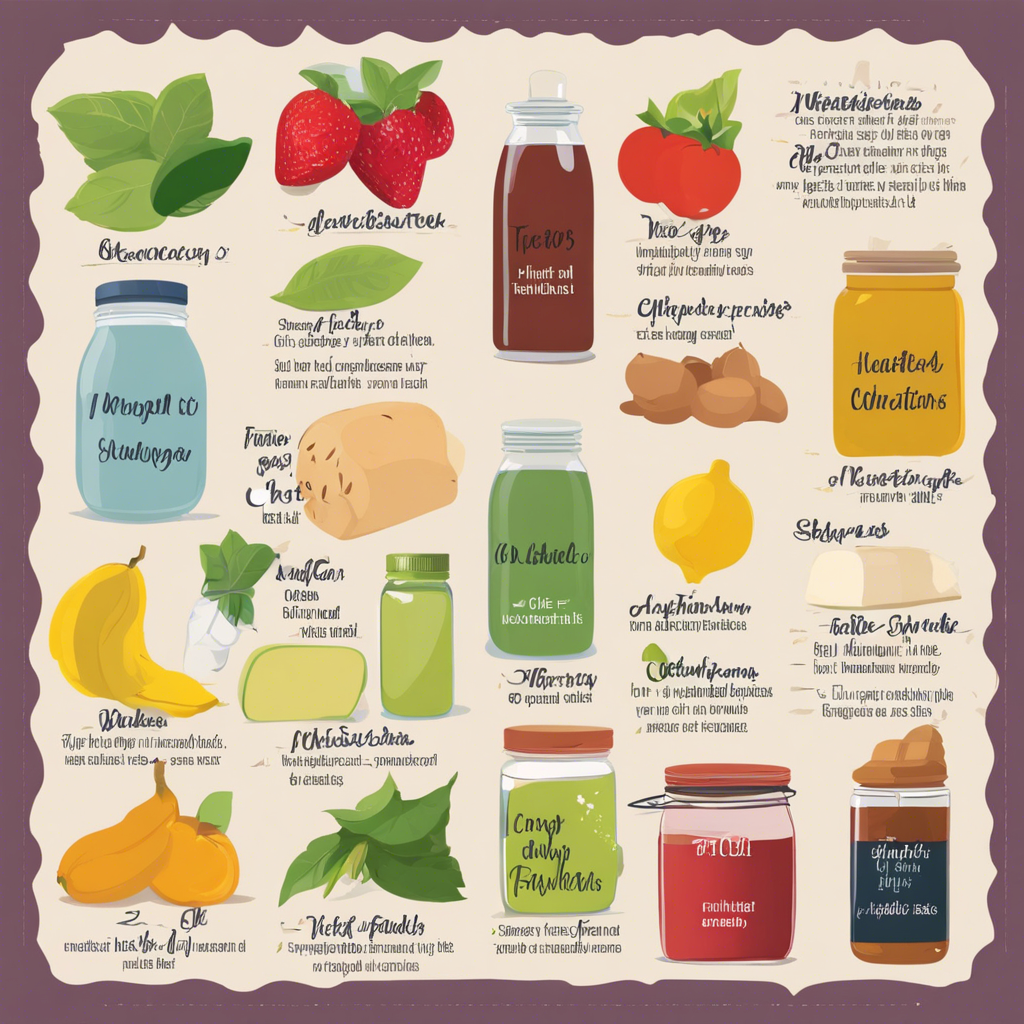Welcome to our easy ingredient substitutions guide! Are you ever in the middle of cooking a delicious meal only to realize you’re missing a key ingredient? Don’t worry – we’ve got you covered. In this guide, we’ll show you simple and clever ways to make ingredient swaps, so you can keep cooking without missing a beat.
Whether you’re out of that specific ingredient or following a recipe with certain dietary restrictions, our guide will provide you with a range of options to seamlessly substitute ingredients in your favorite recipes. No more last-minute trips to the grocery store or giving up on a dish because you’re missing one ingredient!
Discover the art of ingredient swaps and unleash your creativity in the kitchen. Let’s dive into the world of easy substitutions and ingredient swaps that will elevate your cooking game to the next level.
Key Takeaways:
- Learn simple ways to substitute ingredients in your recipes.
- Discover common ingredient substitutions for pantry staples and baking.
- Explore healthier alternatives to reduce fat, sugar, or gluten in your dishes.
- Get creative with unconventional ingredient swaps for a fresh twist.
- Enhance your culinary skills by mastering the art of ingredient substitutions.
Common Ingredient Substitutions
When you’re in a pinch and realize you’re missing a key ingredient for a recipe, don’t worry! We’ve got you covered with some common ingredient substitutions. Whether you don’t have the ingredient on hand or need a suitable alternative for dietary restrictions, these swaps will save the day. From pantry staples to specific baking replacements, here are some options to keep in mind:
Pantry Substitutions:
When it comes to pantry substitutions, you’ll find that many ingredients have suitable alternatives. Here are a few examples:
- Baking Powder: If you run out of baking powder, combine 1/4 teaspoon of baking soda with 1/2 teaspoon of cream of tartar for the same leavening effect.
- Buttermilk: Substitute buttermilk with 1 cup of milk mixed with 1 tablespoon of lemon juice or vinegar. Let it sit for 5 minutes before using.
- Worcestershire Sauce: If you don’t have Worcestershire sauce, mix equal parts soy sauce and lemon juice as a flavorful alternative.
Baking Substitutions:
In baking, certain ingredients have unique roles that can be challenging to replace. However, with some creativity, you can find suitable substitutes. Consider these options:
- Eggs: When baking without eggs, replace each egg with 1/4 cup of unsweetened applesauce, 1/4 cup of mashed banana, or 1/4 cup of silken tofu.
- Butter: Swap butter with an equal amount of coconut oil, vegetable oil, or Greek yogurt for a healthier twist.
- All-Purpose Flour: For gluten-free baking, use a combination of almond flour and coconut flour or a gluten-free flour blend as a 1:1 replacement.
Specialty Ingredient Substitutions:
Some recipes call for unique ingredients that may not be readily available. Fortunately, there are often alternative options that can still deliver excellent results. Here are a few examples:
“Miso Paste: If you don’t have miso paste for your Asian-inspired dish, combine equal parts soy sauce and tahini for a similar umami flavor.”
“Fish Sauce: Replace fish sauce with an equal amount of soy sauce mixed with lime juice to add that savory taste to your recipe.”
With these common ingredient substitutions, you’ll be equipped with options to save your dishes and experiment with new flavors. Now, let’s take a look at healthy ingredient swaps in the next section.
Healthy Ingredient Swaps
If you’re looking to make your dishes healthier or accommodate dietary restrictions, we have some great suggestions for you. In this section, we’ll focus on healthy substitutions, providing you with alternatives that can help reduce fat, sugar, or gluten while still maintaining taste and texture.
Reducing Fat
When it comes to reducing fat in your recipes, there are several ingredient swaps you can try. Instead of using butter or oil, consider substituting unsweetened applesauce, mashed banana, or Greek yogurt. These alternatives can add moisture and flavor to your dishes without the excess fat.
Lowering Sugar
If you’re looking for healthier alternatives to sugar, there are plenty of options available. Instead of using refined sugar, consider using natural sweeteners like honey, maple syrup, or dates. These ingredients can provide sweetness while also adding some nutritional value to your recipes.
Gluten-Free Options
For those following a gluten-free diet, there are many ingredient replacements available. Instead of using traditional flour, you can opt for options like almond flour, coconut flour, or gluten-free flour blends. These alternatives can help you create delicious gluten-free baked goods while maintaining the desired texture.
Tip: When using alternative flours, it’s important to note that they may absorb more liquid. Adjust the liquid content in your recipe accordingly to ensure the desired consistency.
By incorporating these healthy ingredient swaps into your cooking, you can make your dishes more nutritious without compromising on taste. Experiment with different substitutions to find the ones that work best for your recipes and dietary needs.
Creative Ingredient Substitutions
Are you looking to add a touch of creativity to your recipes? In this section, we’ll take you on a culinary adventure with our creative ingredient substitutions. If you’re feeling adventurous or want to experiment with different flavors, this is the perfect place for you.
Unconventional substitutions can often lead to delightful surprises in the kitchen. By thinking outside the box, you can discover unique ideas to give your recipes a fresh twist. Whether you’re missing a key ingredient or simply want to try something new, these creative swaps will ignite your creativity.
Elevate Your Dishes with Unusual Ingredient Choices
When it comes to unconventional substitutions, some unexpected ingredients can work wonders. For example, did you know that pureed avocado can be an excellent substitute for butter or oil in baking? Not only does it add a creamy texture, but it also boosts the nutritional value of your treats.
Another surprising swap is using Greek yogurt instead of sour cream. It offers the same tangy flavor with a fraction of the fat and calories. Give it a try in your favorite dips, dressings, or even as a topping for baked potatoes!
Experiment with Unique Flavor Profiles
If you’re looking to add a burst of flavor to your dishes, consider experimenting with spices and herbs. For instance, instead of using traditional cinnamon, try cardamom or nutmeg for a warm and aromatic twist. Alternatively, swap out your regular basil for fresh mint leaves in your salads or pasta dishes. These unconventional ingredient changes can take your recipes to the next level.
Transform Familiar Ingredients into Something Extraordinary
Get ready to think outside the box and transform ordinary ingredients into extraordinary creations. How about using cauliflower rice as a low-carb substitute for regular rice? Or incorporating zucchini noodles (also known as zoodles) in place of traditional pasta? These unconventional ingredient choices not only add nutritional value but also bring new and exciting textures to your dishes.
| Popular Creative Ingredient Swaps | Usage | Benefits |
|---|---|---|
| Flaxseed Meal | Can be used as an egg substitute in vegan baking | High in omega-3 fatty acids and fiber |
| Coconut Aminos | A healthier alternative to soy sauce | Gluten-free and lower in sodium |
| Cauliflower | Can be mashed or riced as substitutes for potatoes or grains | Low in carbs and packed with vitamins |
These are just a few examples of the countless creative ingredient substitutions you can try. Let your imagination run wild in the kitchen and enjoy the process of experimenting with new flavors and textures. From sweet to savory, there’s no limit to what you can achieve with these unconventional ingredient swaps.
Conclusion
With our easy ingredient substitutions guide, you’ll never get stuck while cooking again. We have provided a comprehensive range of options for common swaps, healthier alternatives, and creative ingredient substitutions. Now, you can confidently whip up delicious meals even if you don’t have all the necessary ingredients on hand.
By exploring the world of ingredient substitutions, you can enhance your culinary skills and add your own unique twist to recipes. Whether you’re following a specific dietary plan, trying to reduce fat or sugar content, or simply want to experiment with different flavors, our guide has you covered.
So, why wait? Start your culinary adventure today and unlock new possibilities in the kitchen. Get creative, think outside the box, and have fun with these easy ingredient swaps. Happy cooking!
FAQ
What are ingredient substitutions?
Ingredient substitutions are alternatives that can be used in a recipe when you don’t have or want to use a specific ingredient. They allow you to make adjustments based on your preferences, dietary restrictions, or ingredient availability.
Why would I need to make ingredient substitutions?
There are several reasons why you may need to make ingredient substitutions. It could be because you run out of a particular ingredient, want to make a recipe healthier, or need to accommodate dietary restrictions. Substitutions allow you to continue cooking without having to abandon a recipe.
Are ingredient substitutions always successful?
While ingredient substitutions can be helpful, they are not always a guaranteed success. Different ingredients have unique flavors, textures, and properties, so the final result may vary when you make substitutions. It’s important to keep an open mind and be willing to experiment to find the best substitute for your specific needs.
How do I choose the right ingredient substitution?
Choosing the right ingredient substitution depends on factors such as taste, texture, and functionality. Consider the flavor profile of the ingredient you’re substituting and look for a substitute that complements or mimics that flavor. Additionally, pay attention to the texture and functionality required in the recipe to ensure the substitution will work well.
Can I substitute any ingredient in a recipe?
Not all ingredients can be easily substituted in a recipe. Some ingredients have crucial roles in providing structure, moisture, or flavor, and replacing them may significantly alter the outcome. It’s best to research and understand the purpose of each ingredient before attempting substitutions. However, with some creativity and knowledge, many ingredients can be successfully substituted.




